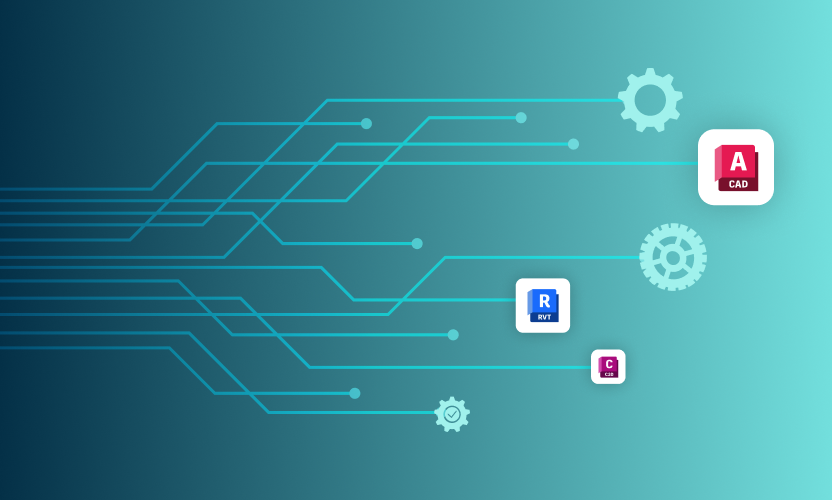
Egnyte vs. Panzura
Recently, Panzura released a short brief comparing their solution against ours.
While so much of it was wrong, they did get one very important thing right—from our architectures to our outcomes, we have two very different solutions.
That's why we are asking Panzura customers or prospective customers to take the Egnyte Challenge. Sign up for a 30-minute meeting, and one of our experts will walk you through how different Egnyte and Panzura are. Then, you can decide which is the better solution for your company. We'll even throw in a $100 Amazon gift card for your time.
Now, getting back to Panzura's Egnyte competitive brief, to quote Jules from Pulp Fiction, "Oh, well, allow me to retort."
Going point by point would make this the longest blog of all time, so I grouped our response into a few key categories: Security and Disaster Recovery, Availability and Performance, Scalability, Collaboration, and one they didn't include in their report, Productivity.
Security and Recovery
Panzura claims to have "military-grade" security with AES-256-CBC encryption and FIPS140-2 certification. Egnyte also has AES-256-CBC encryption, and while we don't have FIPS140-2 certification, our encryption algorithms and strengths are the ones recommended by the National Institute of Standards and Technology for data at rest, processing data, and transport security. We also regularly create new encryption keys and don't entrust our platform with customer keys or data. Instead, we perform the encryption and decryption ourselves so an intrusion on their end will not reveal customer information.
However, this focus only on encryption misses the forest for the trees. Encryption is important, but encryption issues are far less common than storage security configuration mistakes. That is why we employ a defense in depth, protecting data from external and internal attackers. For instance, we actively monitor for phishing attempts and ransomware attacks. We can remote-wipe mobile and desktop devices, limiting possible issues due to lost or stolen devices or disgruntled employees taking a little revenge. Our world-class data security and governance platform also helps analyze and auto remediate security and governance issues.
When it comes to recovery, Panzura states that each Panzura node is a full active disaster recovery site, a claim that Egnyte can't make. While that's a true statement, it's because Egnyte's cloud-first architecture requires a different approach. Instead of focusing on individual sites, we have created multiple layers of defense to cover the entire enterprise, which includes self-service recovery, content versioning, snapshots, and replication to the 3rd-party storage of your choosing. Plus, Egnyte is built on the Google Cloud Platform, providing a global presence with geographic redundancy to secure against any regional issues.
Availability and Performance
Another claim made in the report is that we don't provide high-availability options globally or locally. We disagree. Egnyte's edge solution allows companies to leverage on-premise appliances to guard against connectivity outages. Egnyte automatically handles any internet or appliance failures, so content is made accessible on-site at all times.
Let's look at performance. Panzura claims that Egnyte's performance suffers due to a lack of intelligent tier read caching and prefetching. When in fact, Egnyte's Smart Cache supports both of those features and takes it a step further, providing customers with the ability to customize cache policies for different use cases, such as user collaboration. This allows AEC and Media customers to cache large files locally for access at local speeds while also making sure everything is available in the cloud.
They also state that SMB/NFS streaming leads to slower transit times. This statement is correct, which is why we selectively use SMB for hybrid deployments of specific on-premises applications (such as Revit and Civil 3D) and don't use SMB/NFS streaming. Instead, we operate across wide area networks and are optimized to handle large files through bulk uploads, downloads, and differential sync capabilities to ensure users see each other's changes quickly (which is why you can access your data through any device, including mobile, all without VPN).
Scalability
Panzura states that they can scale globally, which is true, as long as you have the ability, resources, and money to add and manage infrastructure at any location you want to operate. They also claim that Egnyte does not support "global scalability," which is inherently false. As a cloud-first company built on Google Cloud Platform (GCP), Egnyte can scale anywhere supported by GCP (as of Q1 2024, GCP is available in 40 regions and 121 zones and supports our customers on all seven continents) and host as much data as GCP can store and manage. We feel that will cover almost every company out there (if you have so much data that you exceed GCP's capacity, please contact me…I have to hear this story).
Remember, Egnyte is a true SaaS solution, meaning you can right-size your investment for your company. Panzura requires dedicated cloud infrastructure to run and people to maintain it, which means capital investment and hoping that needs don't change.
Collaboration
Let's look at their claim that we have limited global real-time collaboration. Egnyte supports real-time collaboration through file streaming, where only the blocks requested by an application are downloaded/ uploaded, and synching, which allows users to work on the entire file at the speed of working on their desktop. With Egnyte, you can co-edit in Microsoft 365 suite and Google Workspace (both of which I'm told are pretty popular these days). On the other hand, Panzura doesn't support co-editing on Google Workspace, so if your team uses their productivity suite, you are out of luck.
They also mention that we have limited capability to support global namespace, which is true. The reason is that it is really old technology. As a cloud-first solution (I may have mentioned that before), we have moved beyond outdated challenges and instead provide a single access point into your consolidated dataset. This means you can access any document in your company, regardless of where it is created, from anywhere in the world (as long as you have permission to do so).
Finally, they mention that we don't support Revit. However, we have found that most of our customers are already on Autodesk Construction Cloud, which they use for Revit work. They then bring that data back to Egnyte through our integration, giving them the best of both worlds.
Staying with the integration theme, we also support Procore, Bluebeam, FARO, and more than 30 other applications specifically for the architecture, engineering, and construction (AEC) industry. In fact, Egnyte has over 175 integrations with the applications your teams use every day. You can check them out here.
Productivity
One thing that they didn't cover in their report was Productivity. Storing all your content is great, but you are missing a huge opportunity if your teams can't easily access and derive insights from it. So, let's look at some differences between our two approaches.
Egnyte focuses on your mission-critical content and provides solutions that integrate into your teams' existing workflows. That is why we have dedicated solutions for:
- The AEC industry: Offering specific features like automatically uploading jobsite images, project folders, and BIM file search and preview.
- The Life Sciences industry: Offering solutions around eTMF, statistical computing environments, and GxP compliance.
- And soon, the Financial Services industry. You can learn more by watching our first-ever Financial Services Summit on demand.
In addition, we have solutions that apply to any company or industry, such as PDF editing and a native eSignature tool.
Speaking of solutions for any industry, Egnyte has also invested heavily in Egnyte Copilot, our generative AI solution that allows your teams to unlock the insights buried in your content. With chat-based Q&A and our knowledge base assistant, you can pull accurate answers from your company's data without the risk of exposing it to external large language models. It's like having your cake and eating it too. Panzura doesn't have built-in AI, so you need to use a commercially available AI solution, the kind where you give up control of your data.
One final, huge difference between Egnyte and Panzura is VPN. Panzura forces you to use a VPN to access your content unless you pay extra. Yes, the VPN, invented in 1996 and loved by no one, is still a massive part of their solution.
Take the Challenge
More and more of Panzura's customers are looking for a better solution and are switching to Egnyte (maybe that's why they put out the competitive brief). But don't just take our word for it; here are Panzura's reviews on G2 (they have two), and here are Egnyte's (we have almost 1000).
Then, reach out to us. As I said at the beginning, we welcome the chance for you to compare us to Panzura.
Your digital content is your most valuable asset. Isn't it worth spending 30 minutes ensuring you have the right solution?
*All product and company names are trademarks or registered® trademarks of their respective holders. Use of those names does not imply any affiliation with or endorsement by their owners.
The opinions expressed above are solely those of Egnyte, Inc. as of September 04, 2024, and Egnyte, Inc. makes no commitment to update these opinions after such date.






